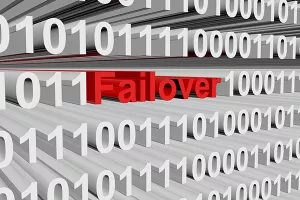This is the third of four posts where we take a close look into the elements that have put DRaaS solutions at the top of most businesses’ lists for data protection.
Failover: The Core Driver for Business Continuity

With failover capabilities for your important servers, backend databases, and networks you can count on continuous availability and near-certain reliability. Say your primary onsite server fails. Failover takes over hosting requirements with a single click. Failover also lets you run maintenance projects, without human oversight, during scheduled software updates. That ensures seamless protection against cybersecurity risks.
Failover can also be tailored to fit your hardware and network setup. So, for example, an administrator may choose to have two servers running in tandem to protect against failure when maintaining a database, and include a cloud server for complete onsite troubleshooting, repairs, and updates.
One-Click Failover for Everything That Matters
You can choose to set up failover for any component of a system. That includes a personal computer, mobile phone processor, or other hardware failures, networks, and network components, including storage devices, connection paths, and web servers. In the case of hosted databases or web apps, failover lets multiple local or cloud-based servers maintain a constant, secure connection, minimizing service interruptions.
StorageCraft Cloud Services offers Virtual Machine Policy with the Cloud Premium service that lets you configure the sequence, order, and timing for each mission-critical system, so you can just press one button to test or start a site-wide failover process.
Why Failover Matters
While failover integration may seem costly, we need only remind you about the incredibly high cost of downtime. Think of failover as a critical safety and security insurance policy. And failover should be an important part of your disaster recovery plan. From a systems engineering standpoint, your focus should be on minimizing data transfers to reduce bottlenecks while ensuring high-quality synchronization between your primary and backup systems.
In our next post, we’ll dive into failback and how it gets your business back online fast. In the meantime, if you’d like to learn more about StorageCraft Cloud Services DRaaS solution, talk to a StorageCraft engineer.
You May Also Like
- Backup and Disaster Recovery Data Resilience
Introducing Arcserve 10000 Series Appliances: Rapid Deployment. Enhanced Security. Simplified Compliance.
December 10th, 2024 - Backup and Disaster Recovery Business Continuity Cloud Compliance Cybersecurity Data Protection Data Resilience Data Storage Ransomware
The Importance of Versatile Cloud Data Protection Support in a Multicloud World
December 3rd, 2024 - Backup and Disaster Recovery Business Continuity Cybersecurity
Tech Conversations - Beyond the Arc: Cyber Confidence for Business Leaders
December 2nd, 2024